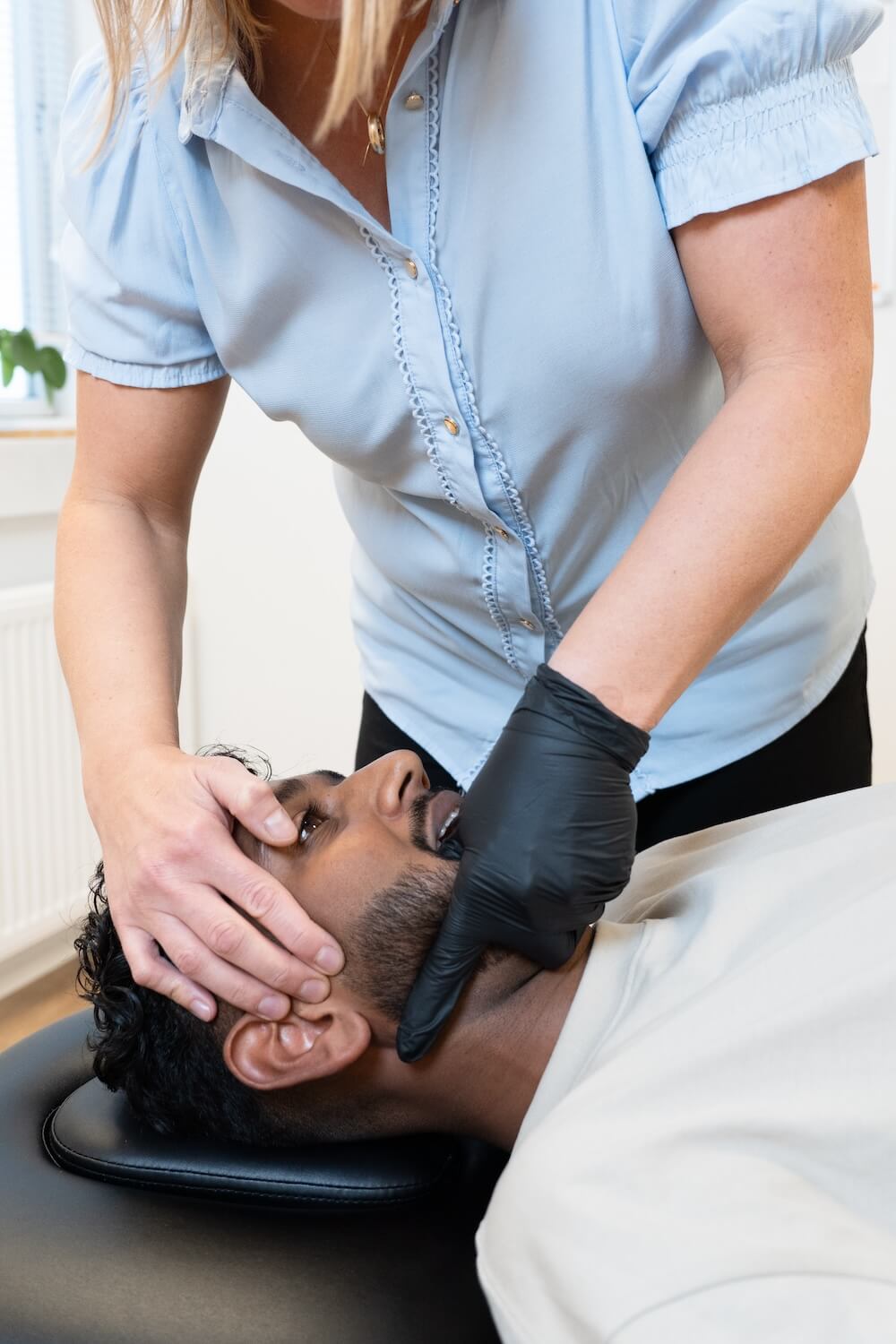We treat
Trigger finger
Learn more about trigger finger and its treatment
What is trigger finger?
Trigger finger is a condition also known as “digitus saltans” in Latin. It is a condition in which one of the fingers – usually the index finger, middle finger or thumb – locks in a bent position and then suddenly springs back into a straight position. It can be painful and uncomfortable, and it can also limit the movement of the finger.
Jump to section [Vis]
Symptoms of trigger finger
The symptoms of trigger finger will typically be the following:
- A slight swelling around the finger
- Tenderness around the tendon in the palm of the hand and in the base joint of the finger
- The finger “locks” in a bent position and may be difficult to straighten again without using the other hand.
Often these symptoms recur between the finger locking and regaining mobility. (Source: Sundhed.dk).

Causes of trigger finger
Trigger finger often occurs due to a thickening or inflammation of the tendons that control the movement of the fingers.
When these tendons become thickened or inflamed, they can have difficulty sliding smoothly through the channels they run through in the hand, resulting in the characteristic “crack” or “snap” sound. (Source: Sundhed.dk).
Osteopathic treatment of trigger finger
If you can identify with the symptoms associated with trigger finger, osteopathic treatment may be a solution. Osteopathic treatment can relieve the symptoms of trigger finger by releasing tension and adhesions in the muscles and connective tissue around the finger – thereby reducing pain and improving the finger’s range of motion.
Gentle osteopathic manipulation techniques and joint mobilization can help restore normal joint mobility in the fingers, which can reduce locking and improve function.
Studies show that if osteopathic treatment shows progress after a few sessions (typically 4-5), there is a good chance that the condition can be significantly improved. If no improvement is seen after these sessions, it is recommended to consider other treatment options such as steroid injections or ultimately surgery. (Source: Holve Healthcare, National Library of Medicine).

Connection between carpal tunnel syndrome and trigger finger?
A study has shown that there is a link between carpal tunnel syndrome (CTS) and trigger finger, as the study found that 25% of patients with CTS also had clinical signs of trigger finger, suggesting that the two conditions often occur together. (Source: SpringerOpen)
The association between carpal tunnel syndrome and trigger finger may be due to common risk factors such as diabetes and rheumatoid arthritis.

Often related problems

Jaw joint pain

Kissing disease

Diabetes mellitus

Eye inflammation

Padel injuries

Sedentary work

Nicotine and exercise

